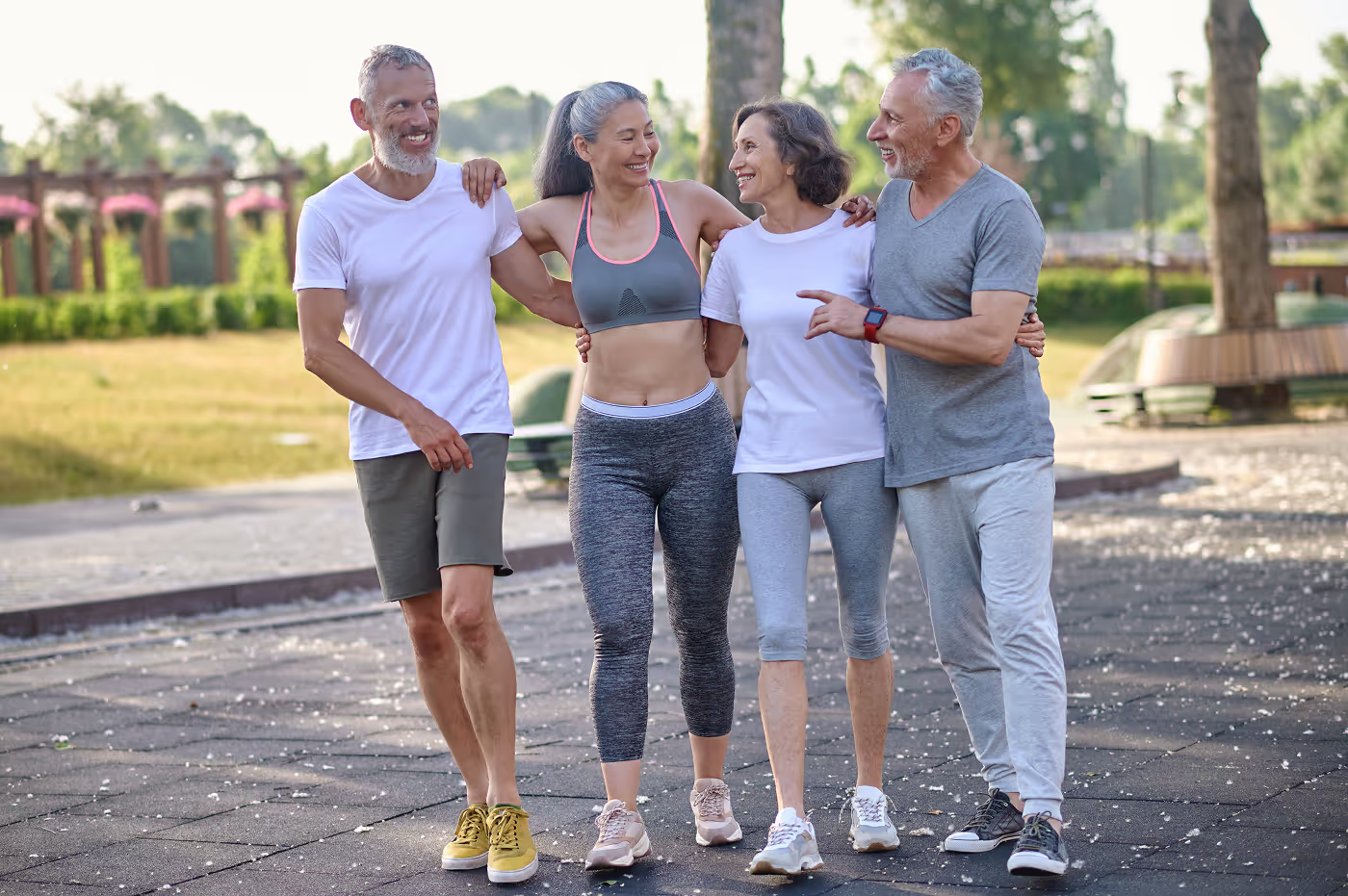
When people hear longevity, they usually picture living to 100, running marathons at 80, or simply adding more candles to the cake. But longevity isn’t only about lifespan (how long you live) — it’s about healthspan (how well you live during those years).
I learned this personally. My grandmother passed away in her 60s. She was fairly active, but she suffered a stroke brought on by high cholesterol, high blood pressure, and high blood sugar. These weren’t just lifestyle factors — they were partly hereditary. It showed me how powerful genes and family history can be, but also how much lifestyle either stacks the odds against us or works in our favor.
That realization reminded me of a quote I really like:
There are known knowns. These are things we know that we know.
There are known unknowns. That is to say, there are things that we know we don't know.
But there are also unknown unknowns. There are things we don't know we don't know.
What It Means:
Known knowns: Facts we understand.
Example: I know that exercise improves cardiovascular health.
Known unknowns: Things we know we don’t fully understand.
Example: I know gut health matters, but I don’t fully know how my microbiome works.
Unknown unknowns: Blind spots — things we aren’t even aware exist yet.
Example: A genetic trait passed from ancestors that influences disease risk, but science hasn’t discovered it.
In a Health and Longevity Context:
We inherit our genes, tendencies, and even risks — some are obvious, some we’re aware of but don’t fully understand, and others are hidden until life surprises us.
But here’s the empowering truth:
Even though some things are out of our control, we are not powerless. We can focus on the controllables — lifestyle, habits, nutrition, sleep, and environment — to influence outcomes in our favor.
We can’t rewrite the past or the genes we inherited. But we can write the future with our choices.
And by doing so, we’re not just helping ourselves — we’re paving the way for the next generation.
Longevity — More Than Just Years on a Clock
Most people confuse longevity with “just living longer.” But science breaks it into two parts:
- Lifespan: total years lived.
- Healthspan: years lived in good health without disease or disability.
Modern medicine can extend lifespan — but it doesn’t guarantee independence, mobility, or joy.
Research backs this up:
Muscle mass is protective. A 2014 UCLA study found that older adults with higher muscle mass had significantly lower mortality risk compared to those with less, regardless of BMI.
Cardio fitness predicts survival. A 2018 JAMA study reported that high aerobic fitness is associated with the longest life expectancy, even more than smoking history or diabetes status.
Mobility equals independence. A 2021 Lancet Public Health paper highlighted that gait speed and lower-body strength are among the strongest predictors of long-term quality of life.
So longevity isn’t just years added — it’s better years lived.
Why Fitness and Longevity Are Interlinked
The science is surprisingly clear: movement is medicine.
Cellular level: Exercise slows down telomere shortening (tiny caps on your DNA linked to aging). Think of telomeres as the plastic tips of shoelaces — when they fray, things fall apart. Fitness helps keep them intact.
Hormonal level: Strength training boosts growth hormone and testosterone (yes, even in women), which helps preserve lean tissue and bone density.
Brain level: Regular exercise improves blood flow to the brain and reduces risk of Alzheimer’s by up to 30%.
Mood level: Movement keeps anxiety and depression at bay, making those extra years far more enjoyable.
A client of mine once told me, “I don’t want to just live long — I want to live happy and strong.” She was in her mid-40s, struggling with low energy and stiff joints. Within six months of consistent training, she wasn’t just stronger — she felt younger. She could play soccer with her kids without getting winded, something she hadn’t done in years. That’s longevity in action.
I don’t want to just live long — I want to live happy and strong.
Common Challenges (And How to Beat Them)
Everyone wants to age well, but let’s be real — life throws curveballs. Here are the roadblocks I hear most often, and how to get around them.
“I’ve inherited bad genes — I’m doomed.”
Family history matters, but it isn’t your fate. Epigenetics research shows your daily habits can “switch” genes on or off. Think of your DNA like a rough draft — what you do today keeps rewriting the story. Focus on the controllables: movement, nutrition, sleep, and stress.
“I’m too busy.”
You don’t need two-hour gym sessions to invest in your future. Even 20 minutes of movement, three times a week, can add years to your healthspan. Longevity isn’t about marathon sessions — it’s about consistency that fits into your real life.
“I’m too old to start.”
This one’s a myth. Studies show people in their 70s still build muscle and improve balance when they start strength training. One of my neighbors picked up resistance bands during the pandemic — he was 72 — and now he climbs stairs pain-free for the first time in years. It’s never too late.
“I don’t know where to start.”
When fitness feels overwhelming, it’s usually because we try to do everything at once. You don’t need to overhaul your life. Just pick one anchor habit: maybe a 15-minute walk after dinner. Once that feels automatic, add in something else like bodyweight squats or stretching. The secret isn’t doing it all — it’s starting small and building from there.
Practical Longevity Fitness — Beyond Aesthetics
When I think about longevity, I don’t just track how much weight I lift or how lean I look. I measure how efficiently my body performs and how well it supports daily life.
For example, I’ll log whether I finished a workout faster or slower than last week, how my max and resting heart rate are trending, or whether my squat is deeper and smoother than before. But the most important measures? The everyday wins. Carrying groceries upstairs without getting breathless. Picking something up from the ground without back pain. Sitting comfortably in a deep squat. Walking flights of stairs without my knees complaining.
These are my real-life personal records. And I’ve noticed that when I focus on those, aesthetics naturally follow. My body looks better because it functions better. And that, to me, is the essence of longevity fitness.
Final Thoughts
Longevity isn’t about surviving longer — it’s about thriving longer. It’s about laughing with grandkids, traveling without pain, or simply feeling good in your own body decades from now.
Yes, you may inherit some risks. My grandmother did, and I carry some of those same risks. But genetics are not a life sentence. Your habits, environment, and daily choices decide whether those risks stay dormant or take over.
Your genes may load the gun, but your lifestyle decides if the trigger gets pulled.
The truth is, there will always be parts of your health you can control, parts you don’t fully understand yet, and parts you’ll never be able to predict. But none of that erases your influence. Every workout, every nourishing meal, every restful night of sleep is a chance to rewrite your future — step by step, day by day. That’s the influence you always hold, no matter your genes.
So don’t get caught waiting for the perfect plan. Begin with the tiniest improvements — a healthier swap here, a bit of movement there — and let those small wins compound into decades of vitality.





















